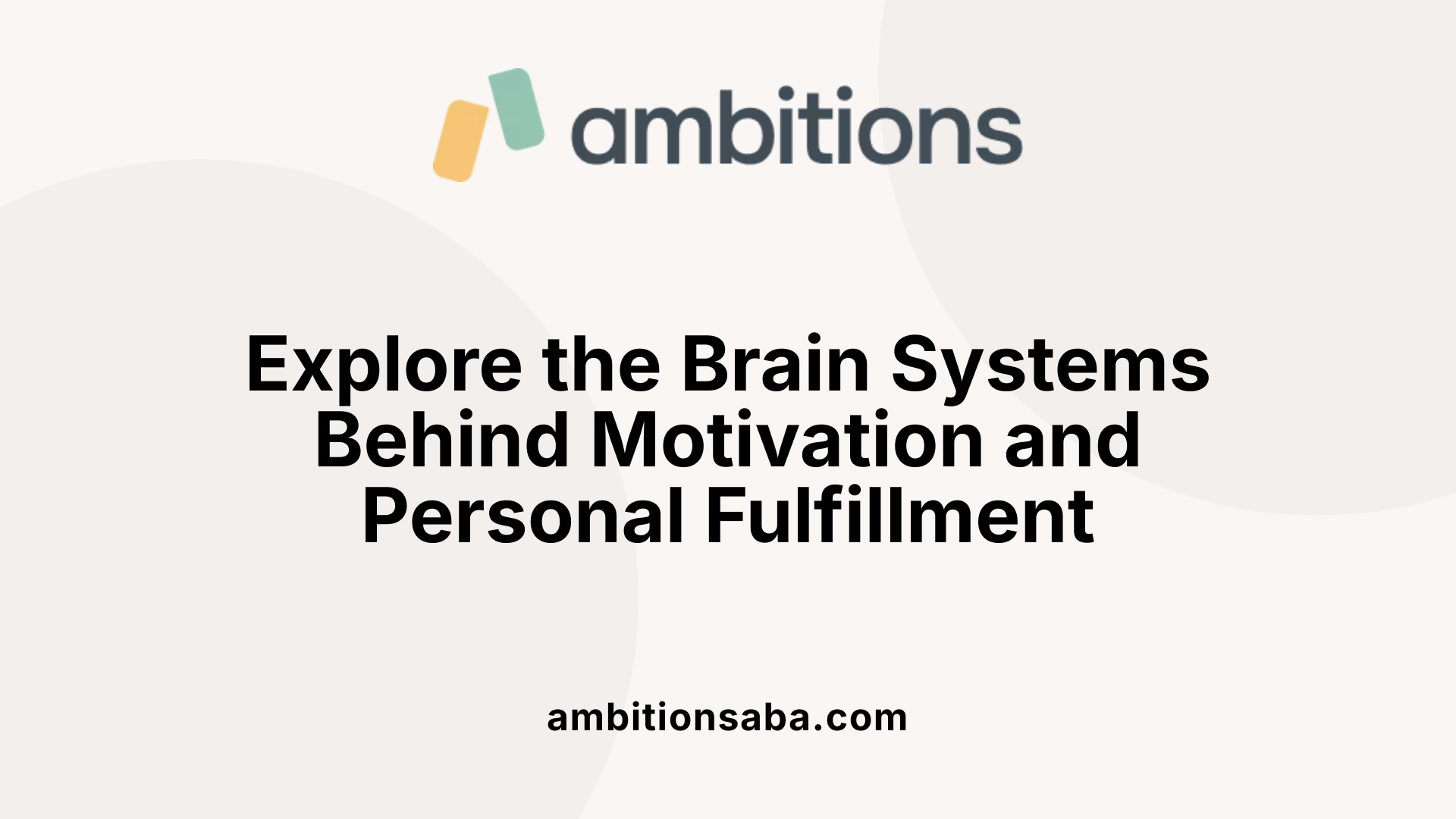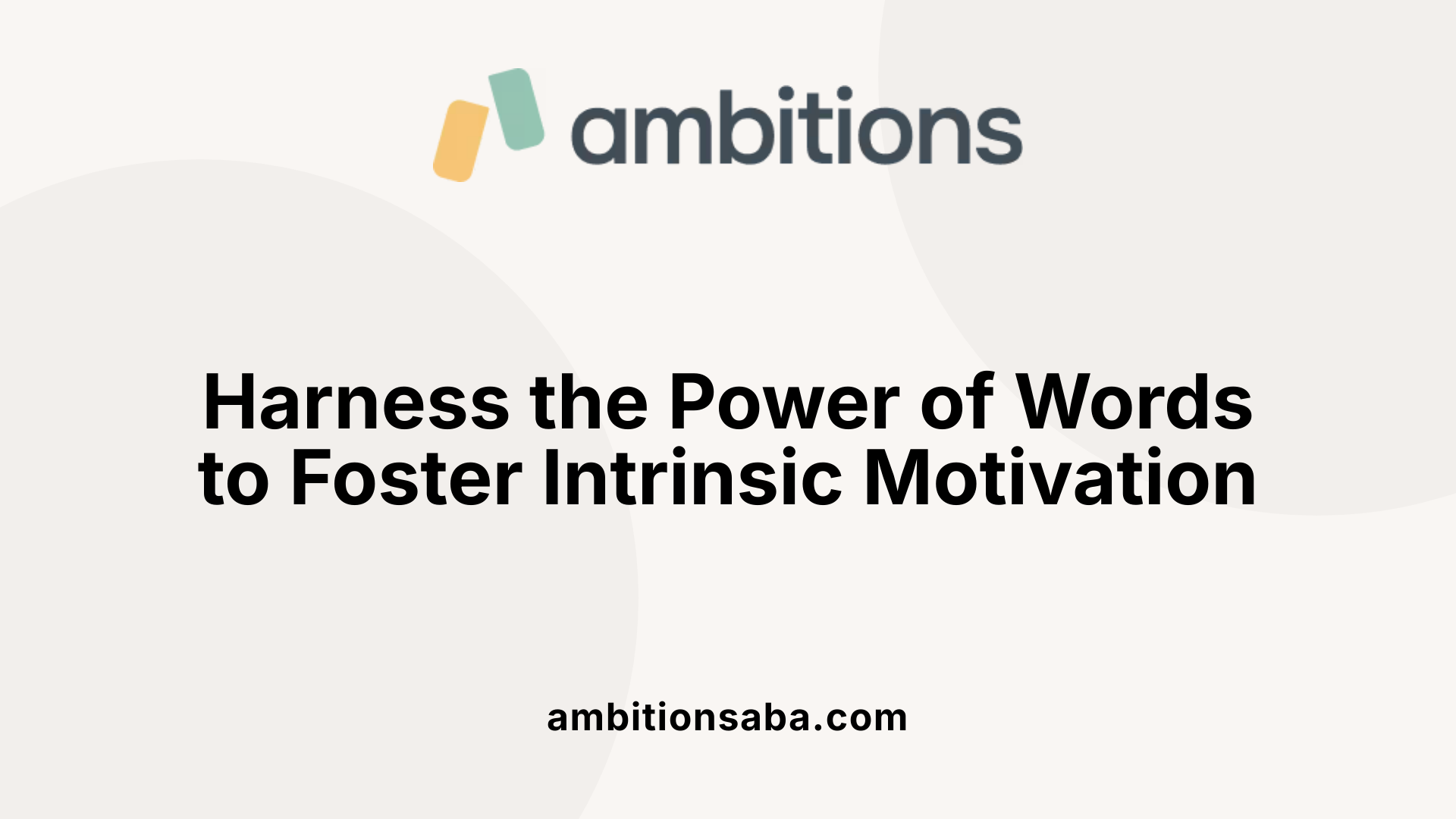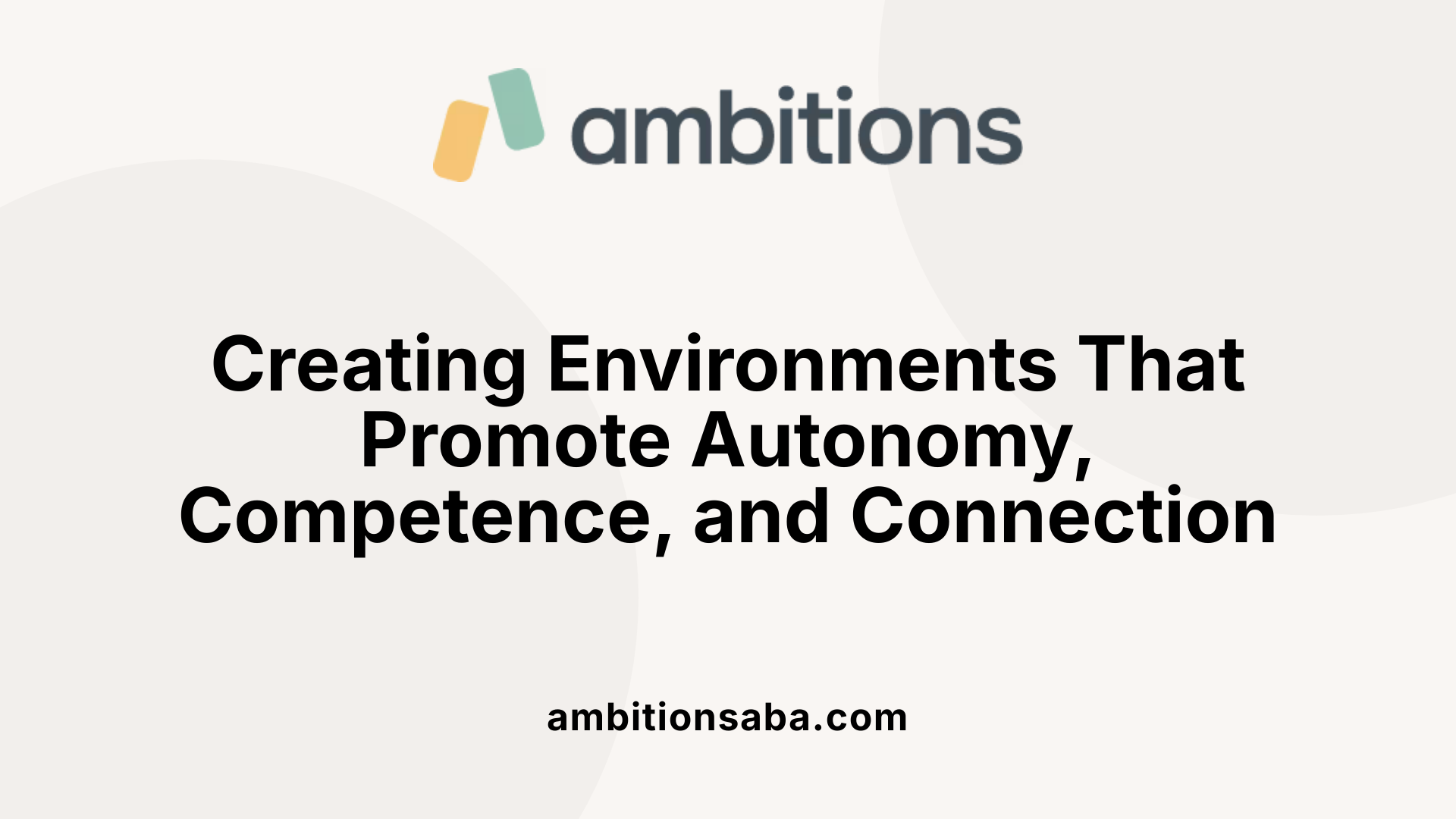Understanding the Shift from External to Internal Motivation
Transitioning from reinforcement-based strategies to nurturing innate, intrinsic motivation is essential for sustained engagement, personal growth, and genuine learning. This article explores the psychological and neuroscientific foundations of intrinsic motivation, practical strategies for fostering it, and how effective communication can facilitate this crucial transition.
Differentiating Extrinsic and Intrinsic Motivation

What are the differences between extrinsic and intrinsic motivation and their psychological foundations?
Intrinsic motivation is driven by internal factors such as enjoyment, curiosity, mastery, and personal interest. It originates from within the individual and is characterized by activities done for the inherent satisfaction they provide. These activities engage basic psychological needs like autonomy (feeling volitional), competence (feeling effective), and relatedness (feeling connected), which are fundamental to self-determined behavior. When someone is intrinsically motivated, they engage in tasks because they find them interesting or meaningful, not because of external pressures or rewards.
In contrast, extrinsic motivation is influenced by external rewards such as money, grades, praise, or social approval. It involves performing a behavior to earn external incentives or avoid negative consequences. While effective in certain contexts, reliance solely on external rewards can diminish internal motivation — a phenomenon known as the overjustification effect — where external incentives overshadow the personal value of the activity.
Psychologically, intrinsic motivation is linked to internal reinforcement systems in the brain, including dopamine pathways associated with curiosity, exploration, and mastery. Neural circuits involving the ventral striatum and prefrontal cortex play key roles. Conversely, extrinsic motivation involves external reinforcement pathways, with brain activation related to reward processing driven by external cues.
Both motivation types can coexist and influence behavior, with their interplay affected by individual perception and context. Self-Determination Theory (SDT) offers an important framework, emphasizing that satisfying needs for autonomy, competence, and relatedness enhances intrinsic motivation, while external rewards can potentially undermine it if perceived as controlling. Achieving a balance involves internalizing external motivators into internal values, thus supporting sustainable and self-driven behavior.
Neuroscientific Underpinnings of Motivation

What neuroscientific and psychological theories inform the understanding of intrinsic motivation?
Understanding intrinsic motivation from a neuroscientific perspective involves examining how brain systems and neurochemical processes drive behaviors that are inherently rewarding. Central to this are dopaminergic systems, especially dopamine pathways originating in the ventral tegmental area (VTA) and projecting to various regions like the nucleus accumbens and prefrontal cortex. These circuits are crucial for encoding reward, pleasure, curiosity, and the satisfaction derived from mastering a task.
The 'SEEKING system,' a concept borrowed from neuroethology, illustrates the biological basis for curiosity, exploration, and the drive to learn. Activation of this system energizes exploratory behaviors and is closely linked with dopamine activity. When individuals or animals explore unknown environments or learn new skills, the neural activity associated with prediction errors—discrepancies between expected and received outcomes—helps reinforce exploratory behaviors and learning.
Large-scale neural networks also contribute significantly to intrinsic motivation. The salience network, which includes the anterior insula and anterior cingulate cortex, detects interesting or novel stimuli, mobilizing attention and preparing the brain for action. The default mode network, active during self-referential thought and reflection, supports internal evaluation and the motivation to pursue goals aligned with personal meaning. The central executive network oversees attention control, planning, and problem-solving, all essential for sustained engagement in intrinsically rewarding activities.
Psychological frameworks like Self-Determination Theory (SDT) complement these neurobiological insights by emphasizing basic psychological needs—autonomy, competence, and relatedness—that foster internal motivation. Neuroimaging studies show activity in regions like the striatum correlates with perceived competence and enjoyment, while the anterior insula and other related areas underpin feelings of autonomy and social connectedness.
In sum, both neuroscientific and psychological models converge on the idea that intrinsic motivation involves a complex interplay of reward processing, prediction error minimization, and network interactions in the brain. These processes facilitate curiosity, mastery, and personal growth, emphasizing that motivation is rooted in the brain's natural mechanisms for exploration and self-fulfillment.
Understanding these neural mechanisms underscores the importance of environments that stimulate curiosity, provide mastery experiences, and support autonomy—factors that naturally activate the brain's intrinsic reward systems and promote sustained motivation.
Supporting the Transition from External Rewards to Internal Motivation

How can individuals transition from external rewards to developing internal motivation?
Shifting from relying on external rewards like prizes or praise to cultivating internal motivation involves focusing on several interconnected strategies. One of the primary approaches is fostering autonomy—allowing individuals to make choices and have control over their activities. This sense of volition enhances internal satisfaction because it satisfies a core psychological need, making the activity more personally meaningful.
Equally important is developing mastery. Setting achievable challenges and experiencing success leads to feelings of competence, which boosts confidence and internal enjoyment. When individuals see their progress and recognize their growing skills, they become more motivated by the activity itself rather than external rewards.
Connecting tasks to personal values and sense of purpose also plays a crucial role. When people perceive that their efforts align with what they care about or contribute to a larger goal, their intrinsic motivation deepens. For example, framing learning as a way to help others or achieve personal growth can ignite a genuine internal drive.
Creating a supportive environment that encourages relatedness strengthens emotional bonds and fosters engagement. By feeling connected to others in their pursuits, individuals are more likely to stay committed and find joy in ongoing participation.
Finally, activities that promote curiosity, enjoyment, and self-directed exploration help internal motivation flourish. Regular reflection on personal growth, along with meaningful feedback, guides individuals toward recognizing their development and internal rewards.
In summary, a balanced focus on autonomy, mastery, and purpose, supported by positive relationships and self-reflection, nurtures lasting internal motivation. This transition enables individuals to develop a genuine love for learning and action, rooted not in external validation, but in internal satisfaction and personal relevance.
The Role of Reinforcing Language and Communication

How does reinforcement language and communication influence intrinsic motivation?
Reinforcement through language and communication plays a crucial role in shaping a person's internal drive to engage in activities. Supportive, respectful, and specific feedback can bolster feelings of competence and autonomy, which are essential components of intrinsic motivation. When communication emphasizes effort, strategy, and progress rather than just outcomes, it encourages individuals to focus on personal growth and mastery. Conversely, controlling language or an overreliance on external rewards like prizes can shift focus outward, reducing internal motivation.
Effective reinforcement often involves private, sincere praise that recognizes specific behaviors and efforts. For example, telling a student, "You tried several different ways to solve that problem; your persistence really helps you learn!" affirms their effort and fosters a sense of competence. Using language that emphasizes process rather than solely results helps individuals see their own growth—an important factor in maintaining motivation.
The timing of reinforcement also impacts motivation. Feedback given after a task, highlighting what was done well, tends to be more effective at maintaining intrinsic motivation than immediate external rewards. When communication aligns with internal values and personal goals, it positively influences motivation and encourages continued engagement. Overall, the way we communicate—from choice of words to timing—either supports or undermines the internal desire to learn and grow.
Practical Approaches for Educators, Parents, and Therapists

How can creating environments support psychological needs to promote intrinsic motivation?
To foster genuine motivation, it’s essential to create settings that support autonomy, competence, and relatedness. Educators and parents can do this by offering choices that enable children to feel in control, framing tasks to highlight personal relevance, and encouraging self-directed learning. For instance, providing options for activities or projects allows children to select what interests them most, reinforcing autonomy.
Promoting mastery involves setting achievable challenges and celebrating progress and effort rather than focusing solely on external rewards. This helps children see their development as meaningful and builds confidence.
Moreover, fostering connections with others through collaborative tasks or group activities enhances relatedness, making children feel valued and understood. When these elements are combined, children become more intrinsically motivated, engaging in activities because they find them meaningful rather than just for external gain.
How can motivational interviewing and reflective techniques support intrinsic motivation?
In therapeutic contexts, techniques like motivational interviewing are highly effective in nurturing internal motivation. This approach involves empathetic listening, reflecting on personal passions, and aligning goals with individual values and interests.
Practitioners use reflective strategies, such as asking clients about their preferences or their vision of a fulfilling future, to help uncover internal desires and purpose. For example, asking questions like, 'What activities make you feel most alive?' or 'What’s a goal you care deeply about?' helps clients connect with their intrinsic drivers.
Furthermore, space for honest reflection encourages individuals to explore their internal motivations, fostering a sense of ownership and commitment to change. These approaches shift the focus from external pressures or rewards to personal meaning, thereby strengthening intrinsic motivation.
What strategies can be used to foster intrinsic motivation in different settings?
Across educational, parenting, and therapeutic environments, several strategies can effectively promote intrinsic motivation:
- Support autonomy: Offer choices and involve individuals in decision-making processes.
- Build competence: Create appropriately challenging tasks and provide positive, specific feedback that emphasizes effort and strategy.
- Enhance relatedness: Foster collaborative activities, shared goals, and supportive relationships.
- Use storytelling and framing: Present activities as meaningful stories or missions, increasing personal relevance.
- Define personal purpose: Help individuals articulate a clear, concise purpose or mission that guides their actions.
- Celebrate effort: Focus praise on effort, persistence, and strategies rather than external rewards; give it privately when appropriate.
- Reduce reliance on external rewards: Minimize extrinsic motivators that may undermine internal satisfaction, and replace them with reinforcement language.
Implementing these principles creates a nurturing environment where motivation stems from within, fostering sustained engagement and growth.
Evidence-Based Strategies for Personal Growth and Behavior Change
What evidence-based approaches exist for developing internal motivation for personal growth and behavior change?
Fostering internal motivation involves strategies that support a sense of autonomy, competence, and relatedness. These elements are central to Self-Determination Theory (SDT), which emphasizes that satisfying these psychological needs enhances intrinsic motivation—the inner desire to engage in activities for their own sake. When individuals feel they have control over their actions, believe they can succeed, and experience connection with others, they are more likely to persist and develop personally.
One of the most effective approaches supported by research is motivational interviewing (MI). Meta-analyses consistently demonstrate that MI significantly influences health-related behaviors by guiding individuals to articulate their own reasons for change. Instead of imposing change, MI reinforces personal values and goals, making changes feel more authentic and self-directed.
Practical techniques that promote internal motivation include setting meaningful and achievable goals tailored to individual interests, providing specific and relevant feedback, and storytelling that frames tasks as purposeful. For example, helping someone articulate their personal purpose in a task, or emphasizing how their efforts align with their broader values, can deepen engagement.
Neuroscientific evidence supports these psychological strategies by showing involvement of dopaminergic systems, particularly in areas linked to reward, curiosity, and self-referential cognition. Brain networks such as the salience network (detecting interesting stimuli), the default mode network (self-related thinking), and the central executive network (attention and control) dynamically interact to support motivated behavior.
Combining these approaches—psychological techniques, behavioral strategies, and insights from neuroscience—provides a comprehensive framework for fostering deep, lasting personal growth. By creating environments and employing methods that nurture autonomy, mastery, and purpose, individuals are more likely to sustain motivation and achieve meaningful change.
Sustaining Motivation for Long-Term Growth
Transitioning from extrinsic reinforcement to intrinsic motivation is a multifaceted process that requires attention to psychological needs, neurobiological mechanisms, and effective communication. By creating environments that support autonomy, mastery, and purpose, and by aligning activities with personal values, educators, parents, and therapists can foster internal motivation that sustains long-term engagement, resilience, and growth. Empirical evidence underscores the importance of ongoing effort, reflective practices, and supportive relationships in cultivating an internal love for learning and personal development.
References
- How to Increase Intrinsic Motivation (According to Science)
- Teaching Without Using Rewards - Responsive Classroom
- Reinforcement Learning with Intrinsic Motivation | by Hey Amit
- The Emerging Neuroscience of Intrinsic Motivation: A New Frontier ...
- Rethinking Reinforcers for Autism - Learn Play Thrive
- Intrinsic Motivation: How Internal Rewards Drive Behavior
- Lecture 6: Extrinsic and intrinsic motivation - Illinois State University



